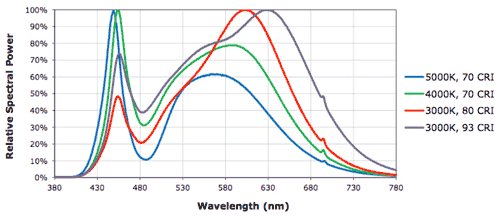Photosynthesis is only one half of the story.
Plants, like animals, have color vision that is independent from the pigments used to produce photosynthesis. Instead of 3 cones that excite the brain electrically, they use 2 complementary pigments, phytochrome-R (the inactive form) and phytochrome-FR (the active form). When one form absorbs a photon, it becomes the other form.
Conveniently (or coincidentally), the absorbance peak of chlorophyll a and the absorbance peak of Pr happen to line up perfectly. This allows leaves to see how "good" the light is, where 660nm is "perfect", and 730nm is "completely shaded". A 660nm light source will cause %Pfr (percent of total phytochromes in Pfr form) to reach %85. a 730nm source will cause it to reach near 0%.
When a lower branch has a low %Pfr, it stretches until it sees a higher %Pfr.
The correlation between %Pfr and stretch rate is logarithmic. You will get exponentially more stretch by introducing far-red to a grow.
If you want proof that 730nm causes stretch, get some high powered 730nm leds (about 20W worth) and introduce them to your grow, and you will no longer doubt this. After a few days, you will be convinced that the stretch is insane just by adding light.
On the other hand, a very small amount of 730nm in your light source is good, because it tells the lower branches with red filtered out to stretch until it gets to canopy level. It's a signal!
Yellow also causes %Pfr to converge lower than red and penetrates well, so it has a similar shade avoidance calibrating effect. As a bonus, any yellow absorbed by lower leaves can be used to produce photosynthesis!








